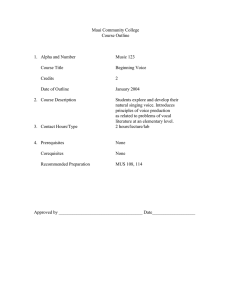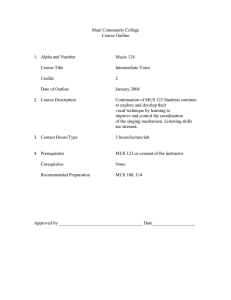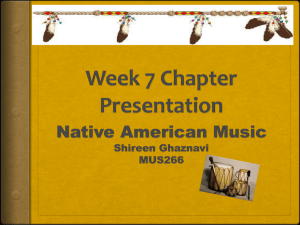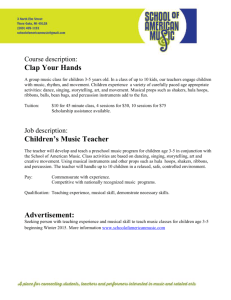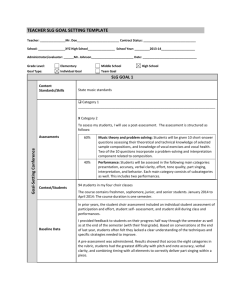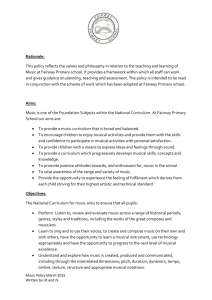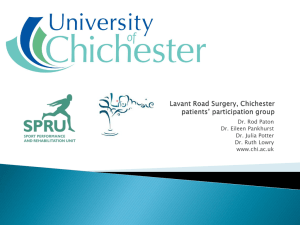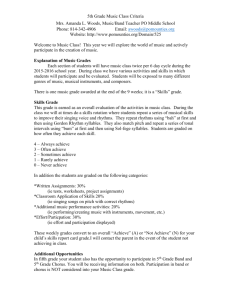Essential Question - the Parsippany
advertisement
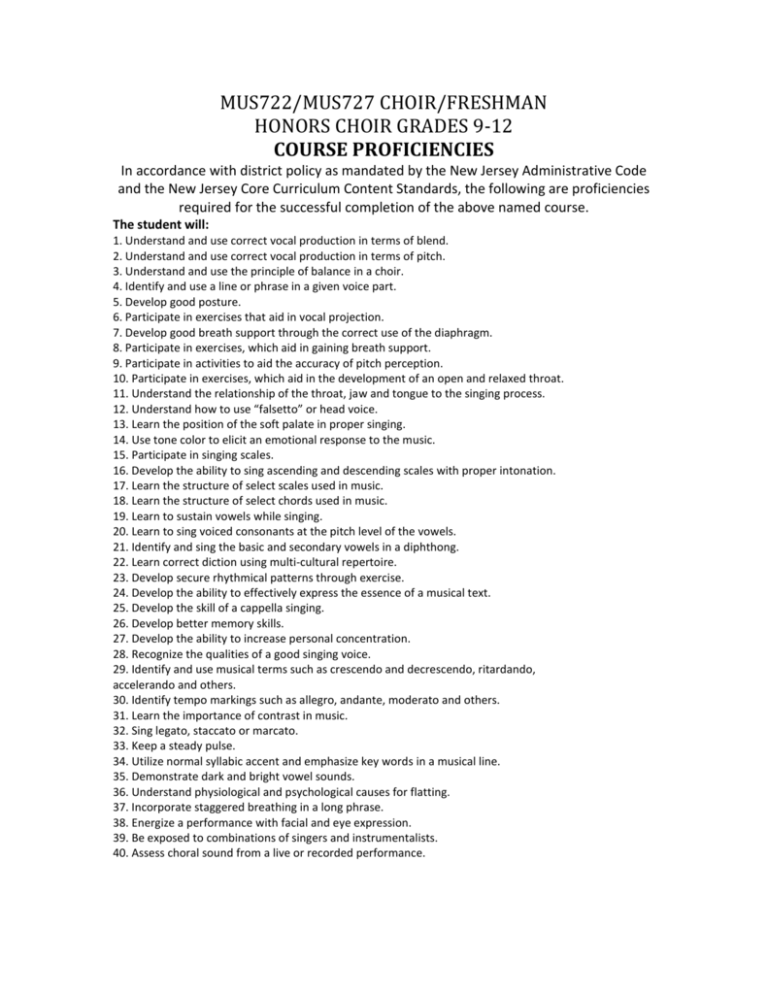
MUS722/MUS727 CHOIR/FRESHMAN HONORS CHOIR GRADES 9-12 COURSE PROFICIENCIES In accordance with district policy as mandated by the New Jersey Administrative Code and the New Jersey Core Curriculum Content Standards, the following are proficiencies required for the successful completion of the above named course. The student will: 1. Understand and use correct vocal production in terms of blend. 2. Understand and use correct vocal production in terms of pitch. 3. Understand and use the principle of balance in a choir. 4. Identify and use a line or phrase in a given voice part. 5. Develop good posture. 6. Participate in exercises that aid in vocal projection. 7. Develop good breath support through the correct use of the diaphragm. 8. Participate in exercises, which aid in gaining breath support. 9. Participate in activities to aid the accuracy of pitch perception. 10. Participate in exercises, which aid in the development of an open and relaxed throat. 11. Understand the relationship of the throat, jaw and tongue to the singing process. 12. Understand how to use “falsetto” or head voice. 13. Learn the position of the soft palate in proper singing. 14. Use tone color to elicit an emotional response to the music. 15. Participate in singing scales. 16. Develop the ability to sing ascending and descending scales with proper intonation. 17. Learn the structure of select scales used in music. 18. Learn the structure of select chords used in music. 19. Learn to sustain vowels while singing. 20. Learn to sing voiced consonants at the pitch level of the vowels. 21. Identify and sing the basic and secondary vowels in a diphthong. 22. Learn correct diction using multi-cultural repertoire. 23. Develop secure rhythmical patterns through exercise. 24. Develop the ability to effectively express the essence of a musical text. 25. Develop the skill of a cappella singing. 26. Develop better memory skills. 27. Develop the ability to increase personal concentration. 28. Recognize the qualities of a good singing voice. 29. Identify and use musical terms such as crescendo and decrescendo, ritardando, accelerando and others. 30. Identify tempo markings such as allegro, andante, moderato and others. 31. Learn the importance of contrast in music. 32. Sing legato, staccato or marcato. 33. Keep a steady pulse. 34. Utilize normal syllabic accent and emphasize key words in a musical line. 35. Demonstrate dark and bright vowel sounds. 36. Understand physiological and psychological causes for flatting. 37. Incorporate staggered breathing in a long phrase. 38. Energize a performance with facial and eye expression. 39. Be exposed to combinations of singers and instrumentalists. 40. Assess choral sound from a live or recorded performance. Essential Question(s) and Enduring Understanding of Content from the Parsippany-Troy Hill School District Music Curriculum-MUS722/727 How would knowledge of rhythm and use of accurate dynamics, articulation and tempo show your understanding of written musical literature? Music proficiencies shown in note duration, tempo, dynamics, breathing, phrasing and balance and blend will result in an excellent music performance product. How does knowledge of the theoretical music elements support a great “At Level” music performance? An understanding and demonstration of correct notation, key and time signature use, and accurate singing of Scales and Intervals all add up to great musical performances. What musical concepts are needed for outstanding high school vocal technique? Breath Control to support a sustained pitch, an Open and Relaxed Jaw, and Proper Choral Diction for Accurate Vowel and Consonant Production are all needed to attain outstanding high school vocal performance technique. What musical ingredients are used to create excellent vocal musicianship? Lyric retention, singing without instrument accompaniment and accurate interpretation of the written musical text all play roles in attaining excellent vocal musicianship.
